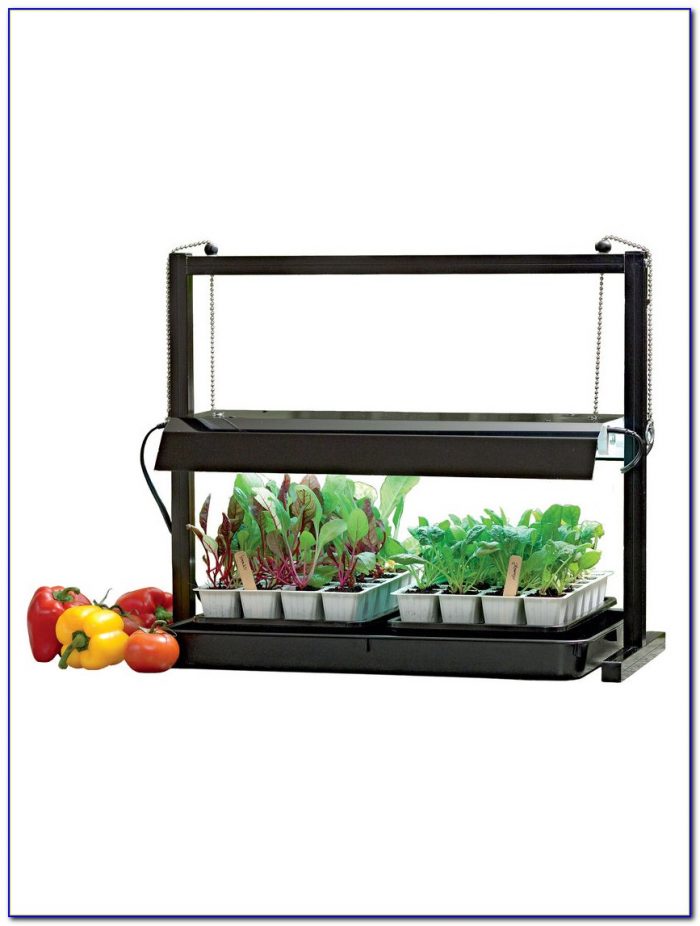
Don’t just set it and forget it though! Pay attention to your seedlings, and if you notice them becoming “leggy”, they’re not receiving enough light, so you should lower your lights. Foot-candles - A measure of how much light a square foot receives at a distance of 1 foot.Ī good rule of thumb is to position your lights 6-24” away from your plants.Unlike lumens, which only measure the brightness of a light source, PPFD measures how much of the necessary light within the photosynthetic spectrum (400-700 nm) is reaching your plant. PPFD - Photosynthetic Photon Flux Density (PPFD) is a crucial measurement for your plants.Lumens do not provide information about how well plants will respond to visible light. While lumens can be a useful tool in determining the appropriate lighting for a room, they are not relevant to the needs of your plants. In general, the brighter a light source appears, the higher its lumen output will be.

Lumens are a measure of the visible light emitted by the light source. Lumens - When shopping for lighting fixtures, including grow lights, you may come across the term lumens.Some grow lights will also include more helpful intensity units including: Every light on the market has a watt measurement, which is the amount of energy that the unit uses. When buying grow lights, in general, more light intensity is better. I start my seeds in the basement, so I don’t mind the purple hue and can deal with it in exchange for a bit more energy efficiency. The reason is, the purple grow lights aren’t very pleasant to be around for long periods of time.
#PLANT GROW LIGHT TABLE FULL#
On the contrary, if you’re starting them on the kitchen counter or some other common space, consider going for the full spectrum grow lights. If you’re starting your seeds in the basement or some other less-used space, go ahead and get the purple grow lights. When deciding between the “purple” and “full spectrum” grow lights, one important factor to consider is where your seed-starting station is. Many LED fixtures include a variety of colors, so instead of a Kelvin number you may see a spectrum graph, similar to the one above. A higher color temperature, such as 6500K, is best for starting seeds. Image modified from The light-dependent reactions of photosynthesis: Figure 4, by OpenStax College, Biology ( CC BY 3.0)įor fluorescents and some LEDs, spectrum is often labeled as the color temperature or K (Kelvin). Optimal absorption of light occurs at different wavelengths for different pigments. Hence, many grow lights on the market try to mimic these wavelengths and are a mixture of blue and red, often appearing purple when combined. Because of this, plants appear green/yellow because they reflect light in those wavelengths. Typically, plants use more blue-green light when they are seedlings and more red light later, when they begin to flower and produce fruit or seeds. However, not all of that spectrum is used equally. Plants use light in the photosynthetically active spectrum between 400 (violet) and 700 (red) nanometers. More important than the type of grow light is the color and intensity of the light that it produces.
#PLANT GROW LIGHT TABLE LICENSE#
The modified image is licensed under a CC BY-SA 3.0 license Image modified from Electromagnetic spectrum, by Inductiveload ( CC BY-SA 3.0), and EM spectrum, by Philip Ronan ( CC BY-SA 3.0). The electromagnetic spectrum and the portion that is visible light. There are a few other lighting technologies that are typically used in commercial applications, such as metal halide lights and sodium vapor lights, but we won’t be focusing on those. Some even come in tubes like fluorescent lights. LED grow lights, on the other hand, are more energy-efficient and come in even more shapes, sizes, intensities, and spectrums. They are also typically less expensive up-front than LEDs, but less energy-efficient.

They’re available in a wide range of color spectrums and intensities. For a long time, fluorescent lights were the go-to bulb for gardeners, but LEDs have quickly become the standard.įluorescent grow lights come in a variety of shapes and sizes, including the traditional tube and the “compact” swirl style. There are two primary technologies for grow lights: LEDs and fluorescent lights. Also, my workbench 🛠! Grow Light Types # We’re going to break down the best options for home gardeners that will best suit your seed-starting needs. But if you’ve shopped for grow lights recently, you may have been overwhelmed by all the different options. However, chances are your average house window isn’t bright enough and you’ll need to supplement the light with a grow light.

One of the most important things a seedling needs is the right amount of light. Starting veggie seedlings indoors is a great way to get a head start on the gardening season and relieve that “gardening itch” that many of us get in the winter. This is the first article in our Seed Starting series.


 0 kommentar(er)
0 kommentar(er)
